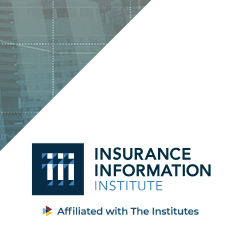By William Nibbelin, Senior Research Actuary, Triple-I
Economic and social inflation have added a staggering $231.6 billion to $281.2 billion in increased liability insurance losses and Defense and Cost Containment expenses in auto and general liability lines, a new report by Triple-I and the Casualty Actuarial Society.
The study – The Impact of Increasing Inflation on Liability Insurance 2015 – 2024 – says this structural rise in loss costs is amplified by what is broadly identified as legal system abuse.
The dual engine of increasing inflation
The analysis focuses on the total impact of increasing inflation determined through actuarial methods that are unable to decompose the precise contribution of economic inflation versus the role of what Triple-I characterizes as “legal system abuse” — policyholder or plaintiff attorney practices that increase costs and time to settle claims to the detriment of consumers, businesses, and the economy. These practices include increasing litigiousness, third-party litigation financing, and soaring jury awards.
Claim severity powers losses
Across all lines analyzed, claim severity – not frequency – emerges as the primary driver of the escalating losses in liability lines of insurance. While the number of claims (frequency) has either generally declined or remained below pre-pandemic levels across the study period, the average cost per claim (severity) has soared. In commercial auto liability, for example, frequency has fallen dramatically since the pandemic, yet losses have still increased relentlessly because severity has risen 93.5 percent between 2015 and 2024.
Auto Liability
The report’s traditional focus on auto liability lines continues to show the most significant dollar-based impacts.
- Personal auto liability: Increasing Inflation added between $91.6 billion and $102.3 billion to losses and DCC for the 2015–2024 period. This represents 8.7 percent to 9.7 percent of losses and DCC for the period and an increase of 20 percent to 26 percent from the previous analysis on years 2014 through 2023. While the implied compound annual impact is lower than in the commercial sector, the dollar amount is huge due to the line’s immense underlying size. Personal auto severity has accelerated significantly post-2019, nearly tripling its compounded annual growth rate to 10.9 percent from 2019 to 2024. Premiums are only just beginning to rebound from pandemic-era lows, lagging the rise in losses.
- Commercial Auto Liability: This line continues to sustain higher inflation rates in percentage terms. The total impact of increasing inflation reached $52.0 billion to $70.8 billion (22.6 percent to 30.8 percent of booked losses). This represents an increase of 22 percent to 27 percent from the previous analysis.
A compelling cross-data set comparison with the Triple-I 2025 report, Review of Motor Vehicle Tort Cases Across the Federal And State Civil Courts, suggests that the “excess value” extracted by motor vehicle tort lawsuits—a clear measure of legal system abuse—was approximately $42.8 billion between 2014 and 2023. This quantitative finding suggests legal system abuse accounts for roughly one-third of the total Increasing Inflation effect in auto liability losses.
General liability lines
This year’s analysis expands to quantify the impact across broader general liability lines for the first time, revealing inflationary rates that are equally, if not more, dramatic in percentage terms.
- Other Liability – Occurrence: Increasing inflation added between $83.4 billion and $103.3 billion to losses and DCC for the 2015–2024 period. This inflationary problem is comparable in dollar terms to personal auto liability, despite having only about one-third of the loss volume. Its implied annual impact of 3.7 percent on a paid basis is the highest of all the lines studied. Severity in this line grew at a compound annual rate of 6.8% from 2015 to 2024, far outpacing the Consumer Price Index All-Urban (CPI-U).
- Product Liability – Occurrence: Increasing inflation added between $4.6 billion and $4.8 billion to losses and DCC for the 2015–2024 period. The smallest line examined exhibits the most dramatic severity trend with a compound annual growth rate of 22.3 percent between 2015 and 2024, resulting in a 512.5 percent severity increase overall. The effects appear to be accelerating, with the impact on Accident Year 2024 alone estimated at over 50% of that year’s booked losses.
For the “claims-made” categories of these liability lines (“other liability” and “product liability”), the study was unable to develop credible quantitative estimates due to shifts in business mix, data variability, and the inherent heterogeneity of the underlying risks. However, these lines have certainly not escaped the increasing inflationary environment.
Looking ahead
The data confirms a difficult truth: Even as general consumer price inflation (CPI-U) moderated to 3.0 percent in 2024—a reduction from the 2021-2023 average of 5.6 percent—the loss inflation in liability insurance remains structurally elevated. This means the economic tailwinds that temporarily exacerbated the problem are lessening, but the foundational issues of legal system abuse persist, locking in a higher rate of loss for the foreseeable future.
For consumers and businesses, this translates directly into higher premiums and a greater strain on their financial well-being. The challenge for insurers is the need to adapt to an elevated inflationary environment to effectively manage future liabilities. Recognizing and addressing the pervasive influence of legal system abuse is therefore essential for both managing risk and protecting consumers and businesses from ever-rising costs.
Triple-I continues to foster a research-based conversation around legal system abuse. For an overview of the topic and other helpful resources about its potential impact on insurers, policyholders, and the economy, check out our knowledge hub.

